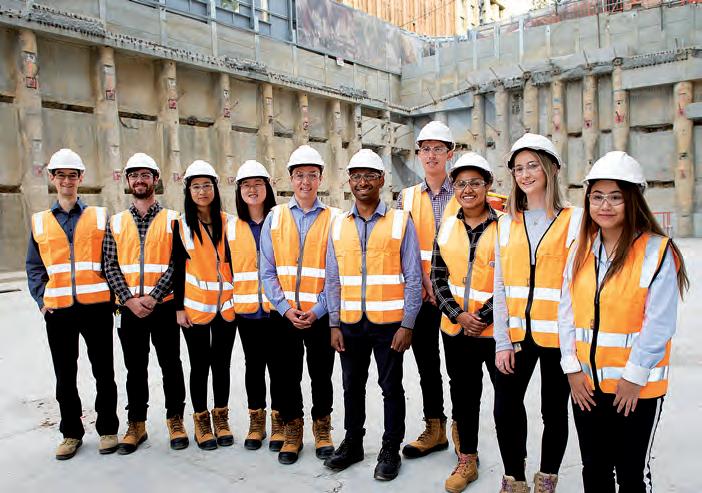PERFORMANCE UNDER
PRESSURE
VEGA AUSTRALIA’S NEW DIFFERENTIAL PRESSURE TRANSMITTER HELPS BITUMEN MANUFACTURERS MAINTAIN SAFETY STANDARDS BY PROVIDING SIMULTANEOUS DIFFERENTIAL AND STATIC PRESSURE READINGS.
A
ustralia’s population is growing by 1.6 per cent a year, generating a thriving infrastructure sector. To keep up with construction levels, production facilities dealing with chemically unstable materials face a specific set of safety challenges. As governments pump money into the industry, processing facilities wanting to keep up with demand need new technologies to help improve efficiency while meeting safety standards. VEGA Australia Managing Director John Leadbetter says this is the reason VEGA ensures all its products have the option to conform to Safety Integrity Level (SIL) approvals, describing the International Electrotechnical Commission’s measurement system as a coherent apparatus for mitigating risk. Drawing from previous company innovations in pressure reading and Bluetooth communication, VEGA has developed the VEGADIF 85, the first differential pressure transmitter of its kind. It is capable of simultaneously measuring differential and static pressure, with the added value of providing that information to customers and enabling wireless configuration by Bluetooth The unit’s ability to output both differential and static pressure is important for processors hoping to improve workplace safety, formulating a more accurate idea of level and pressure readings inside specific vessels, which in turn reduces the possibility of accidents. According to Mr. Leadbetter, bitumen emulsion is a fundamental application of the VEGADIF 85. With a potential 50
ROADS APRIL 2019
THE UNIT’S ABILITY TO OUTPUT BOTH DIFFERENTIAL AND STATIC PRESSURE IS IMPORTANT FOR PROCESSORS HOPING TO IMPROVE WORKPLACE SAFETY, FORMULATING A MORE ACCURATE IDEA OF LEVEL AND PRESSURE READINGS INSIDE SPECIFIC VESSELS, WHICH IN TURN REDUCES THE POSSIBILITY OF ACCIDENTS. explosive environment, the necessity of accurate pressure readings is paramount. The unit’s operating principle, based on it having two diaphragms, or measuring points and with remote chemical seals, one at the bottom of the tank and one at the top, enables the VEGADIF 85 to provide differential and static pressure readings to its users. Mr. Leadbetter says the mechanics and software for VEGADIF 85 were designed in collaboration with customer feedback, with customers routinely asking the company whether it was possible to get outputs for both the differential and static measurement. “Before, transmitters would subtract one reading from the other, providing customers with a single figure, that being the level inside the vessel. We took customer feedback on board and worked to develop a transmitter that could output both figures,” he says. “What we are doing is taking the information that was used as a subtractor and optionally outputting it,” he adds. The previous inability to access both measurements from a single instrument created the potential for over-pressurisation, a massive issue when dealing with emulsion that, when overpressurised, can cause tank explosions.
For flow measurement, pressure difference is determined with a metallic orifice plate that narrows the flow at a predetermined point. Pressure increases in front of this constriction point. This difference – before and after the restriction – is then used to infer the absolute quantity of flow through the pipe. The VEGADIF 85 then converts this information into a corresponding flowrate output signal. The VEGADIF 85 has the option for a compact single-chamber electronics housing made from plastic for intrinsic safe applications or aluminium/stainless steel for flameproof applications. The emulsion process, by its very nature, means pressure transmitters must be able to withstand the harsh environments whilst complying to the requirements of a hazardous area. The VEGADIF 85 can produce accuracies up to 0.065 per cent and has a pressure measuring range up to -16 to 16 bar, a process-temperature rate of -40 to 85 degrees celsius or -40 to 400 degrees celsius with the use of the remote chemical seals and a process pressure falling between -1 and 400 bar. It is approved under SIL for manufacturing processes that depend on certified components, simple, user-













